Heel Spur Surgery
At Luxe Foot Surgery, we provide the best possible service for Heel Spur Surgery in Miami. Our facilities prioritize hygiene, comfort, and state-of-the-art technology, which allows for minimally invasive procedures to reduce pain and recovery time. Our specialists are highly trained to provide ethical and professional treatment to our patients. Additionally, we offer internal payment plans and free consultations with specialists.
AVERAGE COST
$6,000
PROCEDURE TIME
30 – 40 Min
BACK TO WORK
2 - 3 week
FULL RECOVERY
3 - 6 months
Book Your Free Consultation
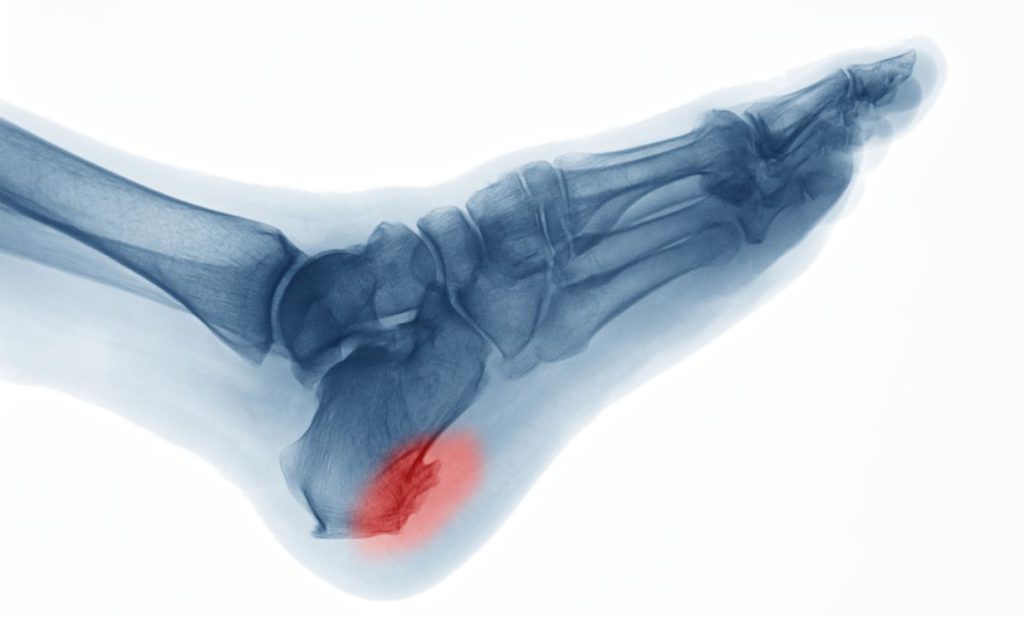
What is the heel spur?
The heel spur is a condition of the foot, which consists of the appearance of a small bony protrusion or calcium deposit in the heel or calcaneus bone. This growth is abnormal and may take the form of a protracted beak or spearhead. It appears in the area of the heel bone, which is on the sole of the foot. The spur can extend up to half an inch.
When the calcaneal spur appears, the tissues that surround it begin to dig into it. The pressure of the body’s weight on these tissues when walking generates inflammation that can cause a lot of pain. The sensation is that of stepping on a nail every time the foot rests. The condition improves with conservative methods or with heel spur surgery.
Heel spur anatomy
The calcaneus is the heel bone, the large bone at the back of the foot. Here is the subtalar joint, one of the most important for locomotion, since the proper functioning of the foot depends on it. A large part of the body weight also falls on the heel bone or calcaneus when standing or moving. When the calcaneus grows abnormally and extends forward in the shape of a beak or tip, we are dealing with a calcaneal spur.
What is calcaneal spur surgery?
If conservative therapies, after 9 or 12 months, do not cause results, doctors proceed to perform calcaneal spur surgery. This surgery is performed after a detailed imaging study. In this way it is located exactly where the spur is, as well as what size and what shape it is. Imaging studies allow us to see which area of the tendon is affected. The heel spur operation can be done through endoscopic surgery, which requires minimal access, or through open surgery, for which a larger incision must be made. In any case, the goal of heel spur surgery is:
- Remove the bony protrusion or spur.
- Smooth the heel bone.
- Separate or cut the plantar fascia ligament from the heel bone.

How much does heel spur surgery cost in Miami?
Heel spur surgery in Miami can cost between $4,000 and $10,000 . The money that patients have to pay out of pocket will also depend on the percentage that their health insurance can cover. The total cost of heel spur surgery varies depending on a few factors such as:
- The type of procedure that needs to be performed.
- The clinic where the operation is performed.
- Doctor’s fees.
- The anesthetist’s fees.
- The prices of the materials and medical equipment used to perform the procedure.
- The hospital stay.
- Laboratory and imaging tests.
- Follow-up visits.
At our Luxe Foot Surgery center we maintain competitive prices compared to those of other clinics or other counties and states in the USA. In addition, we have internal payment plans, to facilitate financing for patients, so that they do not have to do without surgery for financial reasons. If you need a quote for calcaneal spur surgery, you can schedule a free appointment to start a study of your case. We’re here to serve you!
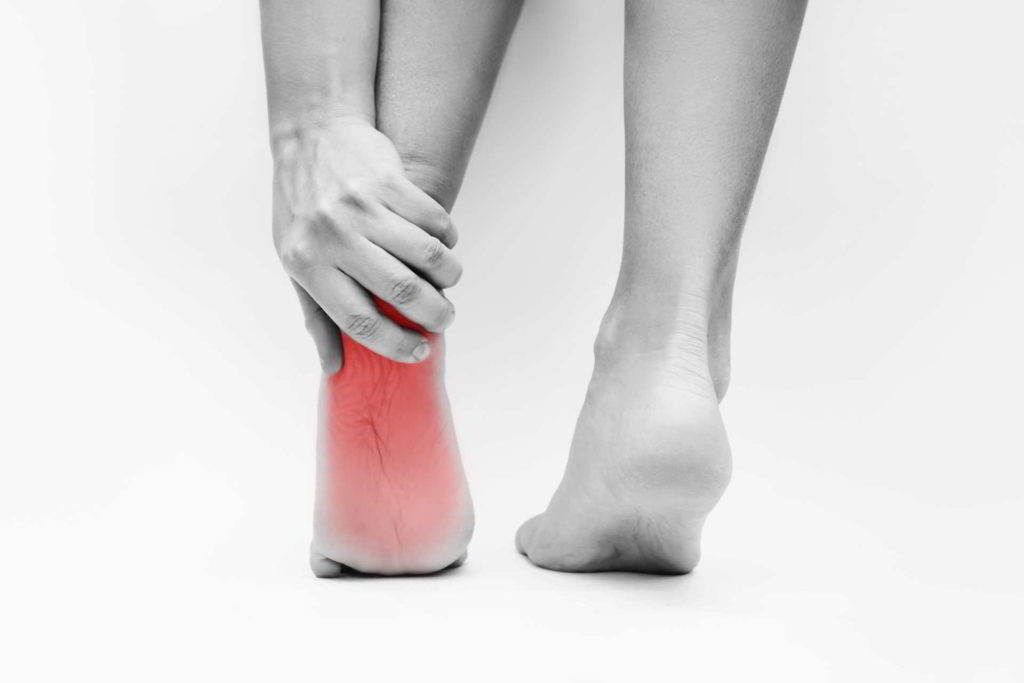
Symptoms of a calcaneal spur
The symptomatology of the calcaneal spur is a bit irregular. There are people who have heel spurs and never feel pain. They only find out about the condition when for some other reason they take an x-ray image of the foot. For other people, heel spurs are often quite painful, especially while they are forming. When this deformity is in a critical state, it can severely limit the mobility of patients. The pain is not due to the spur itself, but to the tissues around it. Among the most common symptoms of heel spurs are:
- Inflammation on the bottom of the foot near the heel (called plantar fasciitis).
- Pain in the heel when getting up or after a rest.
- Pain in the heel when walking.
- Sharp and continuous pain in the bottom of the foot.
- Sensitivity in the sole of the foot.
- Sensation of having a nail buried when placing the foot.
- Visible bump where the heel spur is.
- Mild or dull pain in the sole of the foot throughout the day.
Benefits of heel spur surgery
The results of heel spur surgery improve the quality of life of patients. After the procedure, symptoms should disappear and patients will be able to regain normal foot functions. Here’s a look at some of the benefits patients get after the recovery period:
- Discomfort and pain disappear.
- The functions of the foot are recovered.
- You can walk normally again.
- It is now possible to perform exercises.
- Postural deformations that may affect the spine are avoided.
- There is no inflammation or plantar fasciitis.

Causes of the appearance of the calcaneal spur
Calcaneal spurs, also known as heel spurs, are a common condition affecting many people, particularly those over 40 years of age. The condition is characterized by the formation of a bony outgrowth or protrusion in the heel bone, which can cause intense pain and discomfort. In this article, we will explore the various causes of calcaneal spurs in detail and discuss how to prevent and manage this condition.
1. Plantar Fasciitis: A Common Cause of Calcaneal Spurs
Plantar fasciitis is a common cause of calcaneal spurs, affecting up to 80% of individuals who develop this condition. Plantar fasciitis occurs when the plantar fascia, a thick band of tissue that runs along the bottom of the foot, becomes inflamed and irritated. The condition is often caused by overuse or excessive stress on the foot, such as running, walking long distances, or standing for prolonged periods. Over time, this stress can cause micro-tears in the fascia, leading to the formation of a calcaneal spur.
2. Foot Anatomy and Gait Disorders
The type of foot anatomy and gait disorders can also contribute to the development of calcaneal spurs. Individuals with high arches or flat feet are more prone to developing this condition, as are those with a misaligned spine or pelvic tilt. Congenital deformities of the feet, such as pes planus (flat feet) or pes cavus (high arches), can also cause imbalances in gait, leading to increased stress on the plantar fascia and the heel bone junction.
3. Wearing Unsuitable Footwear
Wearing unsuitable footwear, such as flat or unsupported shoes, is another common cause of calcaneal spurs. Shoes that lack proper arch support or cushioning can cause pressure to be unevenly distributed on the foot, leading to increased stress on the heel. Narrow shoes can also contribute to an altered gait and increased pressure on the heel.
4. Obesity and Excessive Weight
Obesity and excessive weight are two of the main risk factors for developing calcaneal spurs. Excess weight places greater stress on the plantar fascia and the heel bone junction, leading to the formation of calcium deposits over time. Individuals who are very tall, even if not overweight, may also be at increased risk of developing this condition due to the greater load placed on their feet.
5. Age and Arthritic Processes
Age is another risk factor for calcaneal spurs, with statistical studies showing that 11% of the US adult population has developed this condition. Calcaneal spurs have a higher incidence in active adults around 40 years of age. Adults between 60 and 70 years of age may also develop calcaneal spurs, often as a result of arthritic processes.
6. High-Performance Sports and Running on Hard Surfaces
High-performance sports or running on hard surfaces can also contribute to the development of calcaneal spurs. These activities place prolonged stress on the foot, which can cause micro-tears in the plantar fascia and lead to the formation of calcium deposits. Many high-performance athletes may suffer from this condition, to the point of requiring surgical intervention.
Types of heel spur surgery
The most common types of calcaneal spur surgery are the ones we will look at below. It is up to the specialist to determine which of the procedures is most appropriate for each patient. Sometimes patients can receive two of these surgical procedures during the operation. It all depends on the conditions and needs of each case.
1) Release of the plantar fascia
This procedure is the most performed when the plantar spur is accompanied by plantar fasciitis. Heel spur surgery with partial or total release of the plantar fascia consists of cutting part of the tendon tissue that is attached to the heel bone. This produces some separation between the plantar fascia and the bone, which translates into a relief of tension and inflammation of the tendon.
2) Removal of the calcaneal spur
This is the type of heel spur surgery that is usually performed when the heel spur is quite large and causes a lot of pain. It consists of completely removing the bony protuberance or spur of the heel bone. Then the bone is smoothed, so that it does not create new discomfort. It can be done by endoscopic technique or by open surgery. In many cases, heel spur removal is performed after plantar fascia release surgery, allowing better access to the heel spur.
3) Recession of the calf muscles or gastrocnemius
This type of calcaneal spur surgery consists of performing a surgical lengthening of the calf muscles. When the gastrocnemius muscle (popularly known as the “calf muscle”) is tense, it puts more pressure on the plantar fascia. Through this surgery one of the calf muscles is lengthened, with the aim of increasing movement and flexion of the ankle. Depending on the conditions, the surgery can be performed through an open (traditional) incision or with minimally invasive technology. It has a low complication rate. It is generally applied to patients who have great difficulty in flexing the foot.
Recovery time after heel spur surgery
After heel spur surgery, patients must go through a recovery period that can be divided into different stages. The success of recovery depends to a large extent on patients fully complying with the care recommended for each stage. As the days and months go by, the foot will gradually recover its strength and functions, until it finally returns to normality. The length of time it takes to recover varies depending on the type of heel spur surgery performed. Let’s examine the necessary care in each stage of recovery, after calcaneal spur surgery.
First day of recovery
After the operation, the foot will be completely bandaged, and you may have a cast, boot or other immobilization accessory. When leaving the hospital, patients must rest completely for the rest of the day. The most advisable thing is not to bathe that same day. The optimal thing is to remain lying down with the foot high, on pillows. It is recommended that you leave the hospital with a companion and also stay accompanied at home.
First 2 weeks of recovery
It is normal to feel pain in the foot during the first days after surgery. To avoid pain and inflammation, the surgeon will prescribe a plan of analgesics and anti-inflammatories. Applying ice packs is a good way to prevent swelling and bruising. Ice should not be on the wound area for more than 15 minutes, but it can be applied several times a day. It should also not be applied directly to the skin.
The patient should not stand on the foot during the first 2 weeks of recovery. If you need to get up, you must keep your foot off the floor. To achieve this you can use crutches, a wheelchair, or other accessories. When you go to bathe, you should keep the bandage dry and clean.
From the third to the sixth week
After the first two weeks, even a little earlier, at 10 days, the patient will have an appointment with the surgeon to have the stitches removed. You may have an x-ray or CT scan at this appointment. By this time the incision should be completely healed. The patient can begin to support the foot to walk. Physiotherapy exercises will help tone muscles. Those who have office work or some other type of job that requires sitting will be able to join at this time, although they will still have to use boots or crutches to walk. On the other hand, people who work standing up must wait until the fourth week to start work.
Until the third month of recovery
From the sixth week to three months after surgery, the patient’s full recovery is expected to occur. With physiotherapy exercises and walking practice, the foot will be stronger every day. By the third month, it is expected that the pain will disappear and that there will be a complete resolution of the symptoms of the calcaneal spur. It is recommended to continue using appropriate footwear, to avoid the reappearance of the spur.
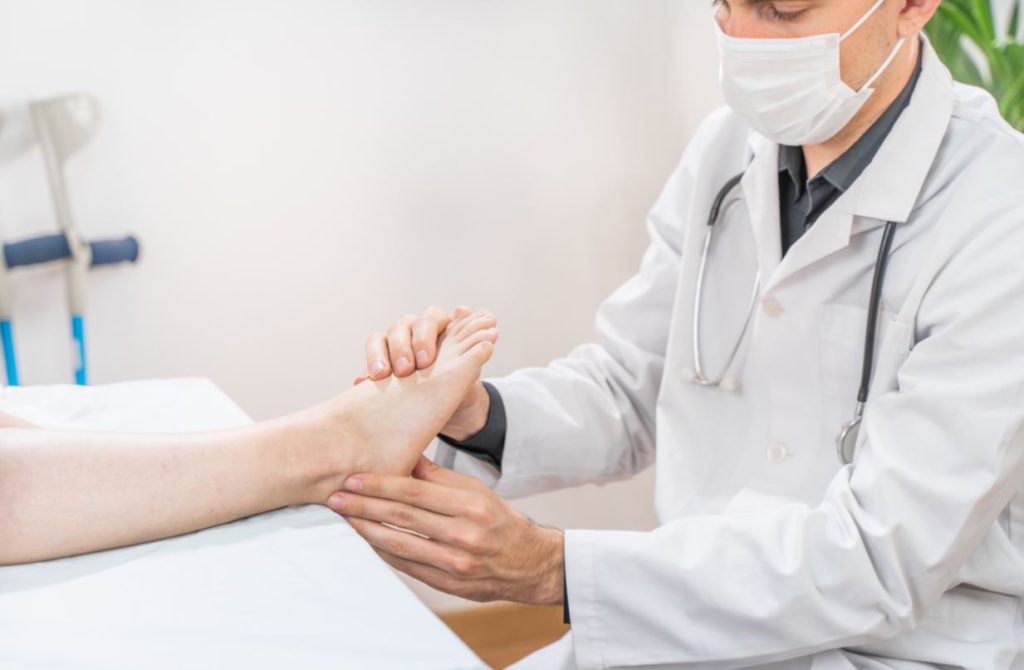
Who needs heel spur surgery?
Heel spur surgery is the solution for those patients who have already tried conservative methods and have not obtained the expected results, or have not perceived any improvement. To perform calcaneal spur surgery, the condition must present the most severe symptoms, which prevent a normal life. In general, these symptoms are based on feeling a lot of pain when supporting the foot, so that the patient is forced to modify his posture to avoid that the weight falls on the heel. In these cases, a heel spur surgery avoids the consequences that adopting a bad posture can have on all the joints.
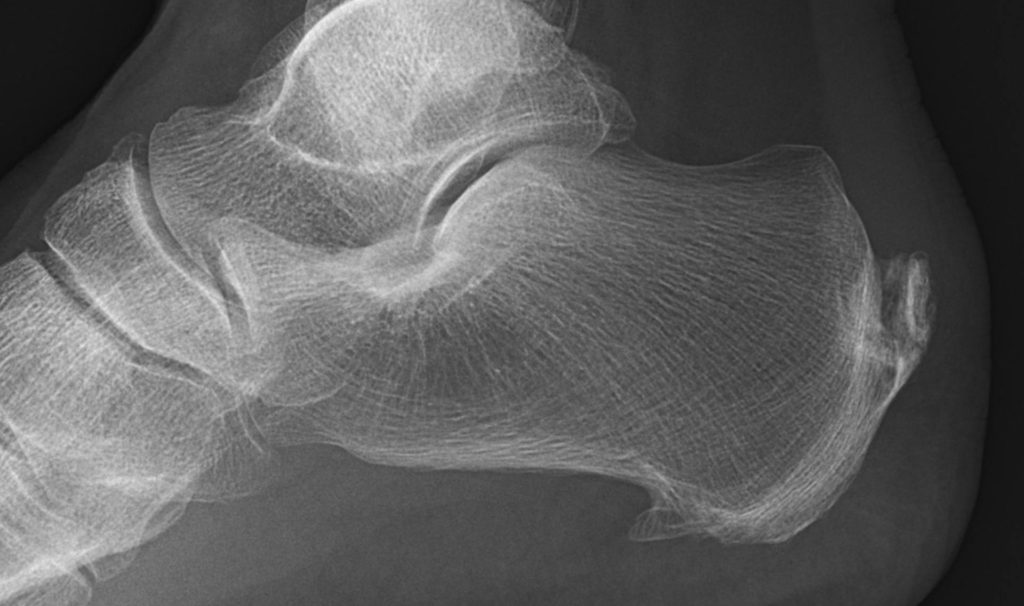
How is the preoperative evaluation of the heel spur performed?
The preoperative evaluation of the heel spur goes through two main phases: one is the medical examination and the other is the tests. Before calcaneal spur surgery, it is important to perform a medical examination in order to diagnose the condition. First the patients must describe the symptoms, and then the specialist will look for some signs, such as:
- Anatomy of flat foot or high arched foot.
- Analysis of the soles of the feet to locate a very sensitive area in front of the heel bone.
- Ask the patient to move the foot, to determine if there is limited dorsiflexion or upward movement of the ankle.
- Rule out other conditions such as Achilles tendonitis, a stress fracture of the calcaneus, or if the plantar nerve is trapped.
Clinical studies are completed with imaging tests. A lateral calcaneal X-ray will reveal the protrusion called a heel spur, what shape it is, and how long it is. X-rays provide clear images of the bones, which can rule out pain from fractures or arthritis. MRI tests and ultrasound are usually not used for heel spurs. Also before surgery, blood samples are taken to analyze and rule out diseases such as rheumatoid arthritis, ankylosing spondylitis or gout.
How do I prepare to receive heel spur surgery?
Before the operation, patients meet with the surgeon for a review of tests and studies. Here it is determined which type of heel spur surgery is most appropriate. The doctor will give specific instructions to the patient regarding what to stop doing before and after the operation. General recommendations:
- Wear loose clothing, such as a skirt, baggy pants, shorts, etc.
- Go to the hospital without jewelry or body adornments, such as piercings.
- Come prepared to remove contact lenses, dentures, watch, etc.
- You must stop eating food from midnight before the scheduled day of surgery.
- You can only drink a little water when you get up on the day of surgery.
- You should stop taking medications that promote bleeding and slow down wound healing. These include anticoagulants and non-steroidal anti-inflammatory drugs.
- It is important that the patient come with a companion on the day of surgery, so that he or she can help them return home.
- During the first times of postoperative recovery, the ideal is to have a companion.
Possible risks of heel spur surgery
Heel spur surgery is not without risk, just like any other surgery. However, it should be noted that the percentage of people who present problems after this type of surgery is very low. However, it is advisable for patients to be aware of these possible risks before undergoing the procedure. Next, we will see some of the most common problems that heel spur surgery can cause.
Permanent or temporary pain
Although most patients who undergo heel spur surgery gradually become pain-free, until the pain disappears for good, there is a risk of continued pain beyond the first week of recovery. This chronic pain can be temporary and disappear after a while, or stay permanently.
Nerve injury
When performing heel spur surgery, there is some risk of injury to the foot nerve or nerve branches. This can cause a numbness or tingling sensation around the operated area. Sometimes the nerve damage is temporary, so patients will regain feeling after a while. However, in some cases the damage can be permanent.
Blood clots or deep vein thrombosis (DVT)
This is one of the most unwanted risks of all surgery. Clots can form in the area where the surgery was performed, or form in another place as a result of the period of inactivity. It is likely that the surgeon will prescribe the patient a plan with heparin, to prevent clot formation, especially in patients with a genetic history of vascular risks. Clots should be avoided at all costs, as if they travel through the bloodstream they can cause a pulmonary or cerebral embolism.
Infections
Although heel spur surgery is performed in an antiseptic environment, making a surgical incision always carries the risk of infection. This is because the protective barrier against the entry of pathogens that is the skin is broken. The best way to avoid an infection is to follow the instructions that the doctor will give about the care and hygiene that must be taken with the wound during the recovery period. A plan of antibiotics to take after heel spur surgery will probably also be indicated.
Changes in the structure of the foot
When heel spur surgery involves the release of the plantar fascia (one of the procedures described above) there is a risk that the structure of the foot will be modified. The foot can undergo a permanent change in its morphology. The plantar fascia is the tendon or ligament that supports the foot when the person is standing, walking or running. It is also the one that naturally forms the plantar arch. With surgery, the plantar fascia can become loose, putting you at risk of losing part of the support mechanism. Functions such as cushioning and releasing loads are weakened. This can cause problems like:
- Fall of the arch of the foot or acquired flat foot.
- Inflammation of the tendon or tendinitis.
- Metatarsalgia
- Unsteadiness to walk or stand.
- Contraction of the plantar fascia ligament, which can cause stiff toes.
Heel fracture
One of the risks of percutaneous calcaneal spur surgeries is heel fracture. Although the percentage of risk of this happening is really very low. Patients who return home with a fractured heel may experience a popping sensation when they try to walk on their foot, pain, and functional impotence. In these cases, another surgery will be performed to remedy the fracture by using screws. The goal is for the bone to perform osteosynthesis.
What can I expect from heel spur surgery?
Heel spur surgery is usually done on an outpatient basis, so most patients can go home the same day. The patient must be prepared to receive some type of anesthesia that can be: general, regional or local. The recovery period will be shorter for endoscopic or minimal access surgeries than for open ones. When you leave the operating room, your foot may be bandaged or have a splint, cast, or boot.
When the bone structure called calcaneal spur is removed, the symptoms that afflicted patients usually disappear. While the recovery process takes place, those who have received heel spur surgery will gradually recover their foot functions to normal.
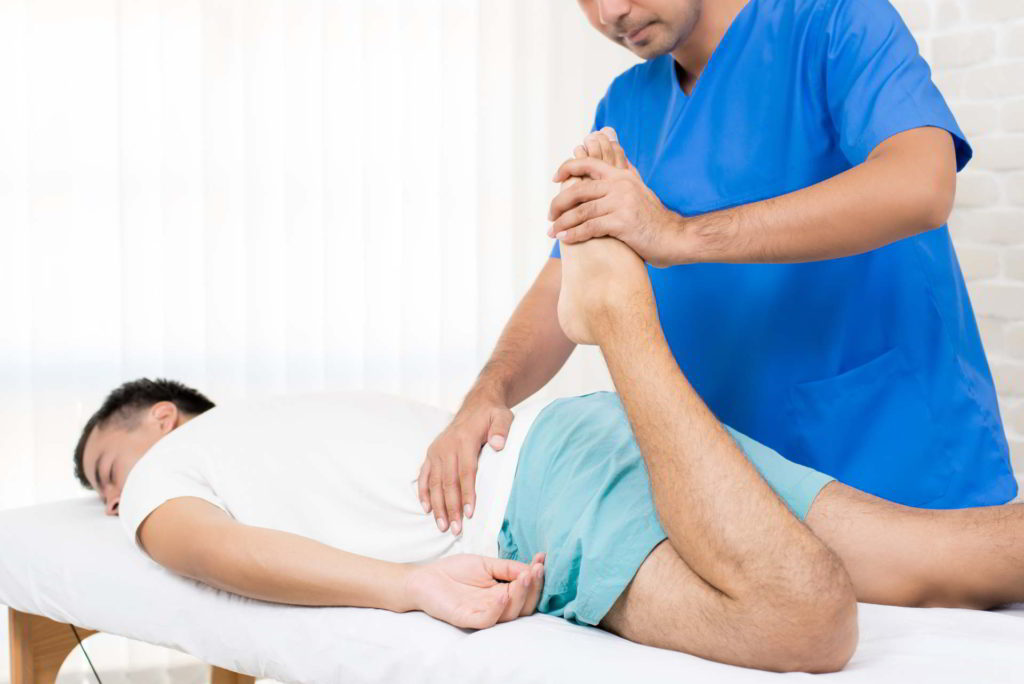
Are there non-surgical treatments to improve the condition of heel spurs?
Yes, there are several non-surgical treatments for heel spurs. Before performing heel spur surgery, one or more of the conservative methods of treating this ailment are tried. Actually, calcaneal spur surgery is the last resort that specialists propose to their patients. Although this type of non-surgical treatment does not eliminate the heel spur, it can greatly improve its symptoms. It is estimated that 90% of patients see improvement in this condition after 10 months practicing non-surgical treatments. Let’s now see some of the most used conservative or non-surgical methods to improve the condition of heel spurs.
Wear shoes that have support
One of the treatments that improve the condition of those who suffer from heel spurs is to wear thick-soled shoes with good cushioning. If the shoe has good padding and a pad is added that covers the heel area, the tension on the fascia is reduced when walking, and as a consequence, microtraumatisms are reduced. This can greatly relieve pain from walking or standing. As a recommendation, patients should stop wearing worn-out shoes that do not have support. Athletic shoes should also be replaced before their soles wear out.
Using braces and pads
Some accessories can be purchased on the market to provide greater support and cushion the foot when walking. Soft silicone pads protect the heel area while raising and cushioning it. You can also use an orthopedic insole of those that are made to measure, according to the conditions and needs of the patient. Another recommended device is night splints. Most people sleep with their feet pointing down, a position that relaxes the plantar fascia. With the splint, the foot assumes a position that keeps the fascia stretched throughout the night. It can be a little hard to get used to, but the splint reduces the pain caused by plantar fasciitis.
Physical therapy
Another option to improve the symptoms of heel spurs is to follow a physical therapy exercise plan. The exercises will be performed with the help of a physical therapist and will focus on stretching the calf muscles and plantar fascia. It may also include ice therapy and massage to decrease inflammation of the fascia.
Take medication
When patients start to feel pain, it can be relieved by taking non-steroidal anti-inflammatory drugs (NSAIDs). The most common are ibuprofen and naproxen. The use of these medicines should not exceed a month, since both can cause side effects such as ulcers, bleeding in the stomach or intestines, constipation, excess gas, thirst, headache, etc.
Immobilize the foot
When heel spurs are accompanied by plantar fasciitis, your doctor may recommend immobilizing your foot for a while. A cast will be placed that will keep the foot immobile, with the aim of deflating the plantar fascia. This can also be done with special boots, but a cast is more effective. The cast keeps the foot 100% immobile, while the patient can remove and put on the boots himself, which reduces the effectiveness of the treatment.
Injections
Cortisone is a powerful anti-inflammatory steroid that is injected directly into the plantar fascia. It has the effect of reducing inflammation and pain. Although it is a very effective procedure, doctors tend to use it very sparingly, because the use of cortisone can weaken the plantar fascia to the point of tearing the plantar fascia. This is very dangerous, because it changes the structure of the foot and can cause chronic pain.
Another injection that is much less risky than cortisone is platelet-rich plasma (PRP). This substance is obtained from the blood of patients, and its objective is to promote the regeneration of the plantar fascia. The downside is that it is a more expensive treatment and is still under investigation.
Shock wave therapies
Extracorporeal Shock Wave Treatment (ESWT) is another non-surgical method for treating heel spurs. It consists of stimulating the healing process of damaged tissues in the plantar fascia through the use of high energy shock waves. It is a fairly safe and non-invasive procedure, which is still being investigated.
Ultrasonic treatment
It is a minimally invasive treatment. It is used as a resource before performing surgery in those patients who have persistent plantar fasciitis. The procedure is performed using ultrasound imaging as a guide to insert a probe into the injured plantar fascia. The probe tip emits vibrations that break up and remove damaged tissue.
Frequently Asked Questions
They are not the same. The plantar fascia is the ligament that connects the heel to the forefoot, and plantar fasciitis is inflammation of the plantar fascia. On the other hand, the heel spur is an abnormal protrusion of the heel bone that appears in the area of the sole of the foot. These are two different conditions. Many patients tend to confuse them because, in a high percentage of cases, they appear together, because plantar fasciitis can be one of the causes of heel spurs and vice versa. However, having plantar fasciitis does not mean that there will be a spur, and that there is a spur does not mean that fasciitis has to appear.
Those who suffer from heel spurs can perform several of the conservative treatments at home, without the need to go to any hospital. Among the most common home methods for heel spurs we have the following:
- Reduce the level of activity : When the calcaneal spur is causing a lot of pain, one of the measures to relieve it is rest. The level of physical activity of the patients must be lower, so that the foot stops receiving the load that causes the pain. Patients who participate in sports or activities where the feet hit hard surfaces (such as running, dancing, aerobics, etc.), should stop doing these activities. If they need to exercise, low-impact exercises such as bicycling or swimming are recommended, which put less stress on the joints of the foot.
- Calf Stretch : Stretching exercises help greatly improve plantar fasciitis when associated with heel spurs. These types of exercises avoid tension in the calves. They are practiced by standing in front of the wall, placing both palms on the wall, keeping the arms fully extended. With the soles of your feet on the floor, bend one knee forward while the other foot remains straight. Next you have to push your hips forward as much as possible, without separating the soles of your feet from the ground. This allows the calf muscles to stretch as much as possible. It is best to hold the position for 10 seconds, relax, and repeat the exercise 20 times for each foot.
- Plantar Fascia Stretch : Performed seated, and its goal is to stretch the plantar fascia. You have to cross the foot over the knee of the other leg, and hold the fingers with your hand to pull them out progressively, as much as possible. Patients who cannot reach their toes with their hand can be helped with some strong cloth. When the toes are stretched, you have to touch the sole of the foot with the other hand. The plantar fascia will feel like a tight band, indicating that it is being stretched. You have to hold the stretched position for 10 seconds, and then relax. The exercise can be repeated 20 times for each foot. This stretch is more recommended in the morning, before starting activities.
- Putting ice : Putting the sole of the foot on a frozen plastic bottle of water and rolling it for at least 20 minutes is very effective in relieving pain and inflammation. This treatment can be daily, and can be repeated 3 to 4 times a day.
Most people with heel spurs improve their condition with conservative treatment. But when heel spurs are not treated in time, the condition can become chronic and worsen your symptoms. This implies feeling more pain and experiencing difficulties to support the foot when walking.
Benjamin Franklin was quite right when he said “An ounce of prevention is worth a pound of cure”. This phrase can be applied to heel spurs as well. To prevent is to change those factors that contribute to the formation of the calcaneal spur. Some prevention actions are in our hands:
- Stop wearing smaller or tighter shoes.
- Avoid exerting continuous and strong pressure on the foot.
- Do not stay overweight or obese.
- Start doing exercises that stretch the plantar fascia and calf muscles.
- Change the shoes with flat and hard soles for those with padded soles.
- Choose suitable footwear for each physical activity.
- Warm up and stretch before physical or sports activities.
- Do not overexert yourself when you are exercising.
Not all patients can undergo heel spur surgery, as there are contraindications for some cases. Although there are few contraindications, not complying with them could expose the health of patients. However, it is up to the specialist to carry out a detailed study of each case, to measure the seriousness or not of their situation. Patients who:
- Suffer from severe bleeding disorders.
- They have concomitant diabetes with peripheral arterial disease.
- Have had a history of deep vein thrombosis (DVT).
- They do not present the typical symptoms, although they do have a heel spur. This is common for patients who have a bone spur detected incidentally on an x-ray.
When you go to an appointment with the specialist for calcaneal spurs, you can ask him some questions that allow you to better understand this condition. Some questions you can ask are:
- What caused my heel spur?
- What habits can I change to improve the symptoms of heel spurs?
- Will heel spur surgery be necessary?
- Can a heel spur go away on its own?
- Will non-surgical treatments improve my heel pain?
We also recommend that the person notify their doctor of any type of condition they have, as this will be taken into account to avoid risks in calcaneal spur surgery. It is of the utmost importance to state whether the potential patient has had a family history of deep vein thrombosis (DVT).
The pain felt in heel spur surgery is minimal, since the foot will be anesthetized. However, you may feel pain when the anesthesia wears off and for the first few days. But that pain will disappear as the foot recovers. Resting, keeping your foot elevated, placing ice packs around the incision area, and even taking pain relievers can greatly relieve pain. Another time when the patient may feel pain again is when they begin to support the foot to walk after surgery.
During the recovery period, patients should observe the evolution of the wound daily. And they should contact their doctor if they experience any of the following symptoms:
- More pain than usual, with redness and swelling in the wound area.
- High fever, over 100 degrees F, combined with chills.
- Nausea and episodes of vomiting.
- Wound oozing humour.
- Bad smell from the wound.
- The wound is still open and won’t heal.
Heel spur surgery has a high success rate, along with a low risk rate. Only a low percentage of those operated on have calcaneal spur problems again. For most patients, with surgery the spur disappears completely, along with the pain and swelling when walking. Although heel spur surgery has been effective, patients must try not to return to the same habits, in order to avoid the appearance of new heel spurs.
This will depend on the type of heel spur surgery that has been performed and how quickly patients recover. The fastest time to start walking is 10-15 days after the stitches are removed from the scar. There will be patients who must wait a little longer, and in those cases it will be the specialist who will indicate the precise moment. The maximum time to start walking can be 3 months.
Before driving again, the patient should ask his surgeon if he thinks he is ready for that activity. Generally, if the heel spur surgery is on the foot that is not used for driving (in automatic cars), the patient may be able to do it again after the first week of recovery. However, it is best to wait until the surgeon has removed the stitches before driving again. We also recommend asking the car insurance what protocols they have for recently operated drivers in the event of an accident.
No. Once a heel spur appears, it does not go away on its own. Not all heel spurs are painful or cause any symptoms. Even, as we have said, the majority of patients who present symptoms experience an improvement with conservative methods, so they will not need surgery and will be able to live with the calcaneal spur. The group of patients who do not find improvement with non-surgical methods should undergo surgery. The heel spur operation is the only way that the protuberance does disappear, since it is removed during the procedure and the bone is left smooth.
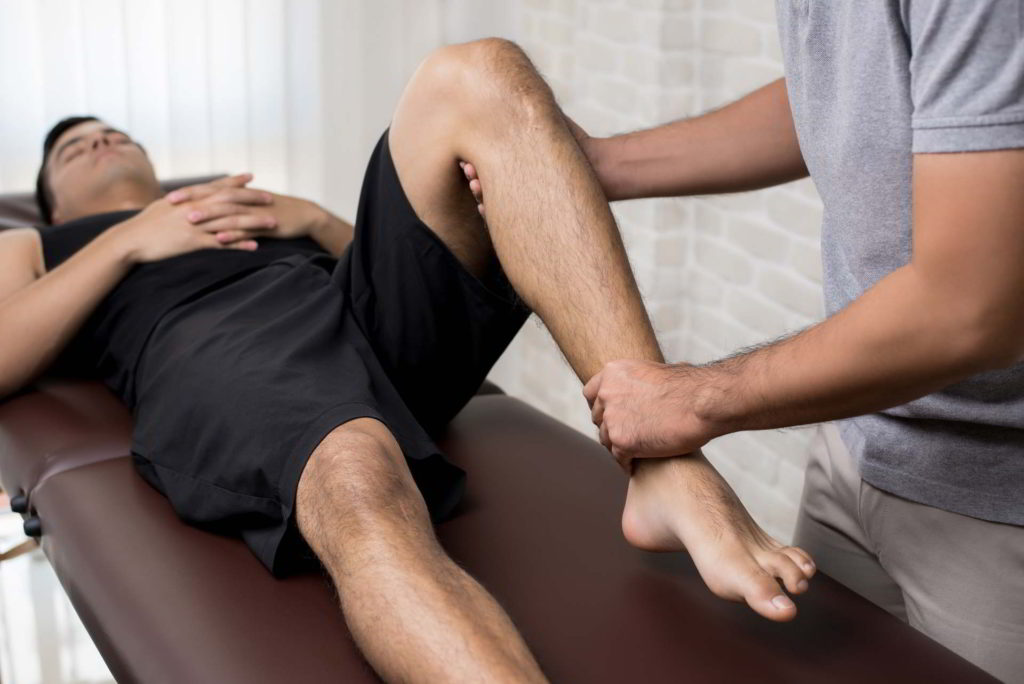
After the first 2 weeks of recovery after heel spur surgery, most patients can begin to walk. At that time, it is likely that there will be pain in the foot muscles and that the person will not feel very strong to hold on. This is normal, because the muscles and tendons will be weak after so many days of rest, and also because of the surgical procedure itself. Most likely, the doctor will indicate physical therapy exercises to strengthen the foot. Among these exercises we have:
- Stimulate contraction : The first thing is to encourage the contraction of the foot muscles. This is done without yet supporting the foot on the calcaneus, to avoid inflammatory processes.
- Flexor Stretch : This exercise relieves tension in the plantar fascia tissues and ankle flexors. It is a way to avoid the reappearance of the calcaneal spur.
- Strengthen the plantar flexor muscles: This exercise progressively unloads the pressure on the flexors, which restores the load resistance of the tendons. What is sought is to avoid breakage in them.
- Stabilize the heel: The heel is essential for walking, and it can become unstable after heel spur surgery. With this physiotherapy exercise, the heel will gradually recover its functions. The physiotherapist will also guide you to adopt a correct posture to avoid a new appearance of the spur.
A greater accumulation of calcium salts and unmetabolized uric acid make the body more prone to calcaneal spurs. That is why some dietary modifications can prevent the mole from growing further.
After heel spur surgery, it is normal to have swelling. In fact, the swelling in the foot, especially in the area of the incision, can last several weeks. The inflammation will disappear as the foot recovers. However, patients should be observant, as exaggerated and persistent swelling, including redness and pain, is not normal. In such cases, you should see a surgeon as soon as possible.
- Joshua Kirkpatrick, Omid Yassaie and Seyed Ali Mirjalili: The plantar calcaneal spur: a review of anatomy, histology, etiology and key associations .
- Vivek R. Velagala, Namrata R. Velagala, Tanishq Kumar, Arihant Singh, and Ashok M. Mehendale: Calcaneal Spurs: A Potentially Debilitating Disorder .
- Physiopedia: Calcaneal Spurs .
- Johann Zwirner, Aqeeda Singh, Francesca Templer, Benjamin Ondruschka & Niels Hammer: Why heel spurs are traction spurs after all .
- Hylton B. Menz, Martin J. Thomas, Michelle Marshall, Trishna Rathod-Mistry, Alison Hall, Linda S. Chesterton, George M. Peat and Edward Roddy: Coexistence of plantar calcaneal spurs and plantar fascial thickening in individuals with plantar heel pain .
Latest Articles
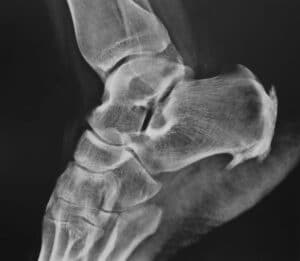
The Breakdown of Haglund’s Deformity Surgery Cost
Haglund’s deformity is a bony protrusion on the back of the heel. This podiatric condition is a result of calcaneus
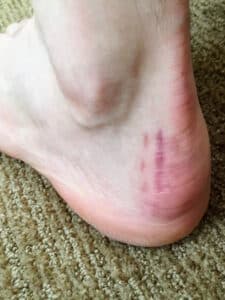
What to Expect – Haglund’s Deformity Surgery Scar
Haglund’s deformity or syndrome is a protrusion on the back of the heel caused by an enlargement of the calcaneal
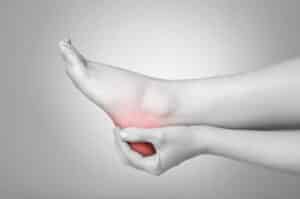
How Long Does Haglund’s Deformity Surgery Tak
Haglund’s deformity, also known as Mulholland deformity, is a bone and soft tissue abnormality on a person’s heel. It causes
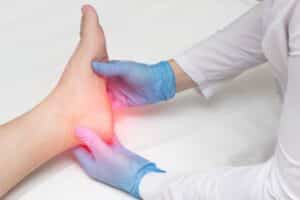
Managing Pain After Haglund’s Deformity Surgery – What to Expect and Tips for Relief
Make the recovery phase after Haglund’s deformity surgery a breeze. Learn tips and tricks for managing pain after Haglund’s deformity
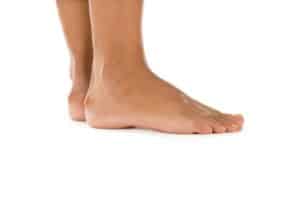
What to Expect After Haglund’s Deformity Surgery
When Haglund’s deformity proves to be resistant to all non-surgical remedies, such as changing footwear, anti-inflammatory drugs, and physiotherapy, surgical
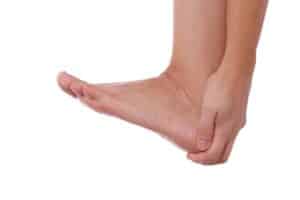
Can Haglund’s Deformity Recur After Surgery? Understanding the Possibilities
When it comes to some of the most stubborn health issues, foot conditions are at the top of the list.
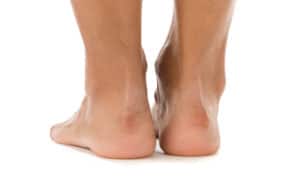
Haglund’s Deformity Post Surgery: A Comprehensive Guide
Each surgical procedure has a unique recovery period, no matter how minimally invasive it is. There will be certain things
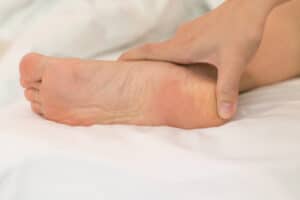
What Are the Main Haglund’s Deformity Surgery Risks? An In-Depth Overview
As with any other medical procedure, Haglund’s deformity surgery comes with its own set of risks and potential complications. Before

Returning to Running After Haglund’s Deformity Surgery – A Guided Journal
When can you return to running after Haglund’s deformity surgery? Physical therapy and a smooth recovery process impact how soon
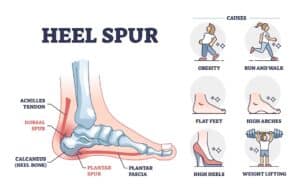
Dorsal Heel Spur Surgery – Procedure, Recovery, and What to Expect
Dorsal heel spur surgery is a procedure that alleviates irritating symptoms caused by heel spurs that develop on the back

Understanding the Costs of Laser Corn Removal
Alleviating discomfort and nagging pain caused by corns on the patient’s feet has never been easier to do. Removing painful
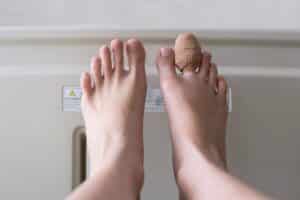
Minimally Invasive Hammertoe Surgery Cost – An Informative Guide
Do you need pain relief from a bent toe joint? Fortunately for many patients, there is a minimally invasive surgery